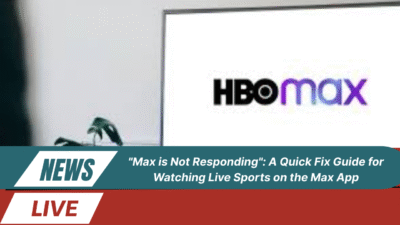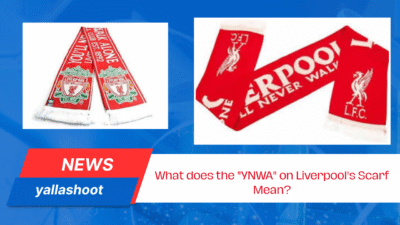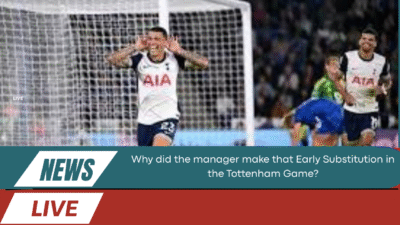VAR Handball Rule Explained has become one of the most searched phrases whenever a Premier League goal is overturned. How often have you seen your team score, only for VAR to intervene and wipe out the celebration? These moments leave fans in shock, questioning why the goal was disallowed and whether the technology is improving fairness or ruining the flow of the game.
The introduction of the new handball rule has further intensified debates. While referees claim the rule offers clarity, supporters argue it’s applied inconsistently. A slight brush of the arm might look harmless, but under VAR review it can change the course of a match, a season, or even a title race.
To understand how the system works, this article breaks down the handball rule under VAR, explores controversial VAR calls, and compares it to other debated rulings like the offside rule.

VAR Handball Rule Explained – Understanding the Basics
The handball rule has always existed, but the role of VAR has elevated its importance dramatically. VAR Handball Rule Explained means referees now rely on technology to decide whether a handball offense occurred and whether it directly influenced a goal or prevented a clear scoring chance.
VAR does not intervene in every case. It is only triggered by “clear and obvious errors.” If a referee misses a deliberate handball in the penalty box or if the ball strikes an attacker’s arm before a goal is scored, VAR can recommend an on-field review.
The complexity lies in the subjectivity. Fans often ask: What counts as deliberate? What if the ball strikes the arm by accident? According to IFAB guidelines, referees consider intent, arm position, and the proximity of the ball to the hand. This is why what looks minor to fans can result in a disallowed goal.
Key Changes in the 2024–25 Handball Rule
The new handball rule introduced for the 2024–25 season attempted to simplify decisions and reduce controversy. Key updates included:
Scorer’s handball rule: If the ball touches the scorer’s arm—deliberate or accidental—the goal is disallowed.
Build-up handball tolerance: If another player in the buildup accidentally handles the ball, the goal may stand, provided the contact is judged natural.
Unnatural positioning: If a player spreads arms unnaturally or raises them above shoulder height, accidental or not, it is punishable.
Despite these clarifications, debates persist. One week a goal stands despite a slight deflection off an arm, the next week a similar situation is overturned. Fans and pundits argue that the inconsistency fuels more confusion, not less.
For further discussion of current match incidents, Yalla Shoot Guide provides insight into VAR decisions today.
Premier League Examples of Controversial VAR Calls
The Premier League has provided countless examples where VAR’s interpretation of the handball rule has changed outcomes:
Liverpool vs Bournemouth (2025): A goal was disallowed after VAR detected a subtle handball in the buildup. Fans claimed it had no impact, but referees applied the rule strictly.
Crystal Palace vs Arsenal (2024): A last-minute equalizer was ruled out when replays showed the ball brushing a player’s arm, leaving supporters enraged.
Manchester City vs Tottenham (2023): Gabriel Jesus’s dramatic stoppage-time winner was overturned due to Aymeric Laporte’s accidental handball.
These matches highlight why VAR remains divisive. To referees, the laws are clear; to fans, they feel subjective and inconsistent. The result is frustration and endless debate.
Handball vs Offside – Which Rule Causes More Frustration?
Both the handball rule and the offside rule generate controversy, though for different reasons.
| Aspect | Handball Rule | Offside Rule |
|---|---|---|
| Interpretation | Subjective – based on intent and arm use | Objective – technology draws precise lines |
| Fan frustration | “Inconsistent” – varies by referee | “Too strict” – goals disallowed by millimeters |
| Impact | Cancels goals in big moments | Cancels goals over marginal positioning |
Offside is highly precise, sometimes to the millimeter, leading fans to complain it removes the human spirit of the game. Handball, however, feels inconsistent because it is open to human interpretation.
VAR Decisions Today – Transparency and Communication
One of the loudest complaints is the lack of transparency. When a goal is disallowed, fans in stadiums often have no idea why.
To address this, the Premier League has trialed referee announcements explaining decisions live in stadiums. For example: “The goal has been disallowed for a handball offense by number 9.” This step improves trust, but many fans want more—showing replays on big screens, publishing VAR audio, and providing post-match breakdowns.
This movement toward openness is crucial for building confidence in the system. Articles like this Yalla Shoot Guide feature highlight how communication can change fan perception.
The Future of VAR and Handball Reforms
While VAR is here to stay, its application must evolve. Football authorities are considering several reforms to make the VAR Handball Rule Explained clearer:
Unified referee training so every official applies the same standard.
Simplified rule wording to avoid confusing language.
Improved technology – AI could eventually assist with handball decisions, just as semi-automated lines assist offside.
Fan education to explain why decisions are made, reducing confusion.
For broader historical context, read about the evolution of handball as a concept to see how interpretations have shifted across eras.

FAQ Section
Q1: What makes a handball offense under VAR?
If a player deliberately uses their arm, or if the arm is in an unnatural position affecting play.
Q2: Why are accidental handballs sometimes punished?
Because if the scorer directly benefits from the contact, the goal is disallowed, even if it’s unintentional.
Q3: How is offside different from handball under VAR?
Offside relies on objective technology, while handball depends on human interpretation.
Q4: Do VAR decisions slow down the game?
Yes, but referees argue accuracy is more important than speed in critical match moments.
Q5: Will VAR rules change again in the future?
Yes. IFAB regularly reviews and updates the rules to clarify gray areas and improve consistency.
Conclusion
The VAR Handball Rule Explained demonstrates football’s struggle to balance tradition with modern technology. While the rule aims to ensure fairness, its subjective application often leaves fans and players frustrated.
Improving transparency, simplifying laws, and adopting better technology are the keys to reducing controversy. Until then, every time the ball brushes an arm, players and fans alike will nervously await the referee’s signal—and the looming VAR review that may rewrite the game’s outcome.










